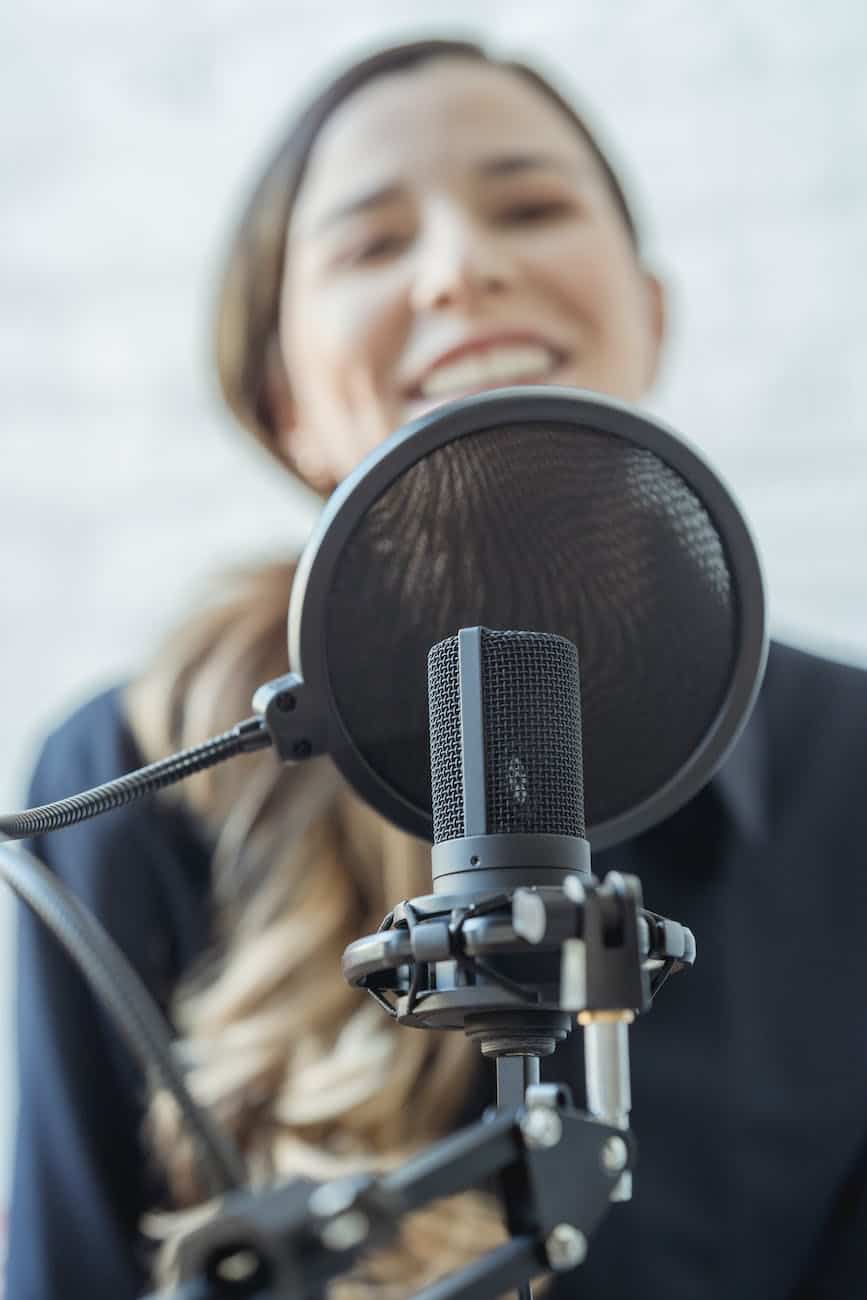Hello music fans and lovers! Have you ever struggled with keeping the beat? It’s a common problem for musicians of all levels, but don’t worry – I’m here to help. As an experienced music performance coach, I have valuable tips to improve your timing and get you grooving to the music effortlessly in no time.
I get asked this question a lot – how do I improve my rhythm skills? The answer is simple: practice, practice, practice! But not just any kind of practice; focused, intentional practice that targets specific areas of improvement. That’s where these tips come in handy – they’ll give you insight on ways to make sure your time spent practicing is as effective as possible so you can reach those goals faster.
So if you’re looking for new strategies or techniques to kickstart your development and boost your overall skill level, read on! This article will provide practical exercises and advice from a professional perspective to help take your playing up a notch and unlock greater potential within yourself.
Definition Of Rhythmic Accuracy
Rhythmic accuracy is the ability to play rhythms as they are written in rhythmic notation accurately. It involves being able to keep a steady tempo, playing time signatures correctly, and understanding how syncopation works within a given piece of music. Tempo accuracy plays an important role in this skill; you must be able to move between different tempos quickly and precisely while still maintaining your desired sound.
Rhythmic exercises can help build up confidence and muscle memory when it comes to playing with precise timing. Ultimately, having good rhythmic accuracy allows us to perform pieces more confidently, effectively communicate musical ideas through our instrument, and express ourselves musically without fear or hesitation. Transitioning into metronome training will help take your rhythmic accuracy even further by reinforcing accurate timing habits that can then be applied to a variety of musical contexts.
Metronome Training
Using a metronome can be key to improving your rhythmic accuracy. When training with a metronome, you learn how to keep steady time and focus on timing. Start by setting the tempo at a comfortable pace and then gradually increase it as you become more familiar with the rhythm. This will help strengthen your internal sense of timekeeping and build up speed over time.
Try playing along with drum beats or other instrumentation to make the process more fun. As you do this, pay attention to when each beat hits so that you can stay in sync with the click track from the metronome. This requires concentration but also helps develop muscle memory for consistent rhythm play.
By consistently practicing with a metronome, you’ll find yourself getting better at keeping accurate time without having to rely solely on the click track. You’ll be able to naturally feel where each beat falls and move faster through complex rhythms while still maintaining great precision. From there, transitioning into understanding basic time signatures becomes easier too!
Understanding Basic Time Signatures
As the rhythm speeds up, so does your need to understand basic time signatures. It’s like taking a deep breath before diving into an ocean of notes and grooves! Understanding some common time signatures will give you confidence when it comes to playing in various tempos.
Let’s start with 4/4 which is probably the most popular sign used by musicians today. This simply means that there are four beats per measure and each beat carries one quarter-note value. A song might be written in 4/4 if its tempo changes frequently or has complex rhythms. 6/8 time signature offers another option for those looking for something different than the standard 4/4 feel.
As the name implies, this means that each measure contains six eighth notes instead of four quarter notes as found in 4/4. If you’re playing slower music with frequent pauses between phrases then 3/4 would be suitable for use. The same goes for 2/4 which can provide additional space and flexibility in your performance especially if using longer note values such as half notes or whole notes within the phrase structure.
Finally, 12/8 allows us to express more intricate syncopated patterns and gives us room to stretch out our improvisations while still creating a sense of groove and drive in our playing.
Now that we’ve covered some basics, let’s move on to exploring techniques for counting beats accurately – essential ingredients for improving rhythmic accuracy!
Techniques For Counting Beats
When it comes to improving rhythmic accuracy, one of the most important skills to master is beat counting. With a proper understanding and steady practice, you can increase your ability to accurately count beats in any time signature or tempo. Here are five techniques for mastering beat counting:
- Start slow – Begin by practicing with a metronome set at 60bpm (beats per minute), then gradually increase the speed once you feel comfortable.
- Identify subdivisions – Listen carefully for the main beats and all subdivisions within them such as 8th notes, 16th notes, triplets etc.
- Count aloud – Don’t just tap along; say each number out loud while keeping an even pulse. This will help train yourself to match what you hear with what you see on paper.
- Use mnemonics – Try using memory devices like “1-e-and-a” when counting 4/4 time signatures or “123 123 123 12” when counting 3/4 time signatures. These tools will help you remember where each beat goes without having to think too hard about it.
- Visualize rhythms – Instead of just listening and tapping along, try visualizing the rhythms as if they were shapes moving through space. This will help develop your sense of rhythm and make learning new patterns much easier! By combining these techniques into your regular practice routine, you’ll be able to quickly gain mastery over rhythm counting and vastly improve your musical accuracy. Now that we’ve covered how to count beats, let’s move onto another key skill: Listening and dictation exercises which allow us to hone our ear training abilities…
Listening And Dictation Exercises
Perfecting your rhythmic accuracy starts with understanding how to listen and then transcribe music accurately. Listening exercises are a crucial component of improving rhythmic dictation skills, as well as the ability to read notation effectively.
When you practice listening intently and concentrating on small details within the structure of a piece of music, it helps sharpen your overall musicality. Develop an ear for different rhythms by practicing simple melodies over and over again until they become second nature.
Musical dictation is another excellent way to develop precision rhythmically. This exercise requires you to hear a melody or phrase in its entirety before writing down what has been heard (or tapping out the rhythm) without looking at any sheet music or instruction book. The challenge here is that each time you do this activity, you must remember more information than when doing traditional reading-based activities such as scales and arpeggios. Practicing these kinds of drills regularly will help build your confidence so that being able to write complex pieces quickly becomes almost like second nature!
These two methods can be used together in order to get the most benefit from them both; by combining active listening with note transcription, you’ll eventually find yourself adeptly playing whatever comes your way musically speaking – leaving you ready to move onto utilizing drum machines and sequencers
Utilizing Drum Machines And Sequencers
If you’re looking to improve your rhythmic accuracy, utilizing drum machines and sequencers can be a great way to start. It’s an incredibly useful tool for practicing specific rhythms in any given time signature or tempo.
The advantage of using them is that they allow you to program beats with precision and repeatability, so you can focus more on the nuances of timing instead of worrying about playing along with other musicians. This also gives you the opportunity to explore different ideas without having to commit them to memory right away.
It’s important when working with either of these tools that you understand some basic music theory principles such as note values and rests, meter, subdivisions, etc… Having this knowledge will not only help you create better sounding beats but will give you insight into how certain rhythmic patterns are constructed. Taking the time to learn music theory fundamentals will make it easier for you to experiment and come up with interesting and complex rhythms.
This type of practice can also help enhance your ear training skills by forcing you to listen closely for subtle variations in rhythm. As long as you keep studying and experimenting with drum machines and sequencing software, your rhythmic accuracy should noticeably increase over time. With each project or beat created, there is a chance for growth; use this opportunity wisely!
Learning Music Theory Basics
Now that you have mastered utilizing drum machines and sequencers, the next step is to learn the fundamentals of music theory. It’s like a tightrope walker who knows how to balance on the rope but still needs to use their arms for stability; learning music theory gives us an understanding of what notes sound good together and why.
Below are four key elements of musical theory that will help improve your rhythmic accuracy:
| Element | Description | Example |
|---|---|---|
| Chords | Combinations of three or more notes played simultaneously. | C major chord (C-E-G) |
| Scales | A sequence of eight tones ascending and descending in pitch. | Chromatic scale (A-Bb-B-C etc.) |
| Intervals | The distance between two notes. This could be melodic or harmonic intervals. | Major third interval (C-E) |
| Rhythm Patterns | Repetition of short musical phrases which can be combined into longer patterns. | Eighth note triplets (1&a 2&a 3&a 4&a) |
Start by familiarizing yourself with these four basics, as they provide the foundation for constructing melodies and rhythms within any given song structure. Make sure to practice sight reading exercises so you can become comfortable recognizing these concepts quickly while playing an instrument.
Once you understand the core principles behind chords, scales, intervals, and rhythm patterns, it’s time to start applying them! Try experimenting with different combinations until you find something that sounds pleasing to your ears – there are no wrong answers! As you get better at using this knowledge, your sense of timing becomes stronger and more accurate over time.
By engaging in creative experimentation through trial and error, musicians can open up new possibilities for self expression that would otherwise remain unexplored – opening doors for exciting collaborations with other musicians along the way.
Practicing With Other Musicians
One of the best ways to improve your rhythmic accuracy is by playing with other musicians. By jamming with bandmates and engaging in ensemble playing, you can hone your timing skills while having fun.
Not only that, but it’s a great way to learn syncopation drills, new musical ideas and group improvisations. Playing music together helps you connect more deeply with the notes and grooves as well as develop better listening skills.
Working alongside fellow players also allows you to observe their technique and gain valuable insights from them about how to play accurately.
Another advantage of rehearsing with others is that you get immediate feedback on what works or needs improvement during each jam session. This real-time guidance will help you stay focused on refining your own rhythm so that when your time comes for a solo or duet piece, you’ll be confident in your performance ability.
Rather than just relying solely on theory books, scales and exercises at home, getting out there and interacting musically with others gives you an opportunity to consolidate all those technical elements into one cohesive sound that won’t fall apart live onstage. Now onto recording yourself…
Recording Yourself
Recording yourself can be an invaluable part of improving your rhythmic accuracy. By listening back to your performances and studying them, you can identify any areas that need attention. Here are a few tips for making the most out of the recording process:
- Utilize home recording techniques such as audio engineering or vocal tracking. This will give you more control over the quality of your recordings and help you hone in on specific elements of your playing.
- Experiment with track editing tools such as EQing and compression. These allow you to fine tune individual instruments or sounds within a mix so that they fit together better overall.
- Have fun! Don’t forget that music is meant to be enjoyed, and experiment with different ideas while recording – this could lead to new avenues of creativity which may benefit your rhythmical accuracy too!
By taking time to refine your skills through careful self-recording and analysis regularly, you’ll quickly see improvements in both speed and precision when it comes to mastering rhythms on stage or in the studio.
Regularly Refining Your Skills
Did you know that it takes 10,000 hours of practice to master any skill? That’s why regular and consistent training is key when refining your rhythmic accuracy. As a music performance coach, I have seen countless musicians who are excellent performers but don’t put in the required amount of practice for their skills to reach perfection.
Regularly practicing specific techniques to refine your technique will help build up muscle memory so that your motions become natural and effortless from years of repetition. Start by focusing on a few simple exercises at a time and work hard until they feel comfortable enough to play with speed and accuracy. Then progress onto more complex rhythms as you develop further mastery over each exercise.
And remember: It’s ok if things don’t come naturally right away; keep pushing yourself!
Consistency is also an important factor in developing accurate rhythmic abilities. To ensure that you maintain the highest level of proficiency, dedicate some time every day or week to practice different exercises related to rhythm and timing.
Also, playing along with records-listening closely while following the beat can be incredibly helpful in honing your musical ability. With patience and dedication, you’ll find yourself mastering challenging pieces with ease!
Frequently Asked Questions
How Often Should I Practice Rhythmic Accuracy?
If you want to improve your rhythmic accuracy, then the frequency of practice is key. How often should you practice? That depends on how much time and commitment you are able to invest in your rhythm training daily. If you’re feeling ambitious, regular daily practice can help keep your skills sharp and ensure that your accuracy keeps improving.
However, if you don’t have a lot of spare time or energy each day, then it’s totally fine to commit to practicing less frequently. Even just 15 minutes per day spent focusing on one specific element of rhythm – such as perfecting a particular beat or pattern – can make an impact over time if done regularly. By taking small steps towards improvement rather than trying to jump ahead too quickly, you will end up being more successful in the long run.
No matter what approach works best for you, having a consistent daily rhythm when it comes to practicing music is essential for developing skill and accuracy as a musician. As a performance coach I always encourage my students to find their own balance between ambition and practicality when working on their technique – this way they will be able to maximize their progress without compromising other areas of life!
What Is The Best Way To Get Started With Using A Metronome?
Getting started with a metronome can be intimidating, but it’s also an extremely effective way to improve your rhythmic accuracy. My best advice as a music performance coach is to start slow and build up gradually. To help you get going, I’ve outlined three key steps for successful metronome practice:
- Start by setting the tempo of the metronome lower than what you feel comfortable playing at so that you have time to think about each note and adjust your technique if necessary. As an example, let’s say you’re learning a piece of classical guitar music in 4/4 time at 120bpm; try starting at 60 bpm and work your way up from there.
- Once you’ve got the hang of playing along with the metronome at a slower speed, begin increasing the tempo incrementally until you reach your desired goal. Aim for 10-15 bpm increases every couple of minutes or so to ensure proper development of your technique without getting overwhelmed by too much information all at once.
- Finally, focus on keeping good time while still maintaining control over the dynamics, articulation and expression within your playing – this will help make sure that not only are you accurate rhythmically speaking, but also musically engaging! The combination of these elements will allow you to create something truly beautiful when performing live or recording in the studio.
In short, regular use of a metronome is essential for improving one’s rhythmic accuracy – just remember to take small steps and stay focused on both timing and musicality simultaneously for maximum effectiveness!
What Tips Can I Use To Remember Complex Time Signatures?
Are you struggling to remember complex time signatures? It can be hard, especially when there are so many variations and changes. But with the right tips you’ll be able to master them in no time! As a music performance coach, here’s what I recommend for understanding and memorizing complex time signatures:
First off, it’s important to start by familiarizing yourself with rhythm notation reading. This will help you understand how different components of the beat work together, making it easier for you to comprehend more intricate patterns. Once you’ve got that down, begin practicing timed drills so you can get used to counting longer phrases without getting lost or confused. This is also an excellent way of helping your brain learn complex rhythms faster.
Another useful tip is making mental notes whenever you encounter a tricky time signature change. Write it down if necessary; this will help jog your memory if ever needed again. Additionally, try writing out some simple melodies using various complex time signatures as well – this helps build up muscle memory over time as well as encourage creative thinking along the way!
Finally, don’t forget about taking regular breaks too – your ears need rest after all that practice! That being said, always keep pushing yourself even further each day and soon enough mastering those complex time signatures won’t seem like such a daunting task anymore.
What Are The Benefits Of Using A Drum Machine Or Sequencer?
The beat of a drum machine or sequencer is the backbone to any musical production. It’s also an invaluable tool for improving rhythmic accuracy and honing practice technique. A good drummer knows how to keep time, but a great one can add nuances that make the music come alive.
A drum machine or sequencer can help you take your skills to the next level by providing precise beats at different tempos and rhythms so you can really focus on mastering rhythm patterns in depth. This precision allows you to develop muscle memory when practicing complex time signatures quickly and accurately, something that would be difficult with just acoustic drums.
Using a drum machine or sequencer not only helps improve your technical skills, it also has creative benefits too. You’ll find yourself experimenting more with sounds and grooves as well as being able to create tracks faster than ever before. Ultimately this will give you greater control over your music production process, enabling you to express yourself musically in ways that were previously impossible!
How Long Should I Spend Practicing Rhythmic Accuracy Each Day?
When it comes to improving your rhythmic accuracy, how long should you spend practicing each day? It’s an important question and one that every musician needs to ask themselves. As a music performance coach, I recommend spending at least 30 minutes every day on rhythmic accuracy exercises. This will ensure that you consistently build upon your skills and become more confident with them over time.
For those who are just getting started with their practice routine, the amount of time spent can be adjusted accordingly; start off slow by dedicating 10-15 minutes a day for daily rhythmic accuracy drills. Once you have built up some confidence in your playing, gradually increase the duration of your practice sessions as needed. Regularly working on rhythmic accuracy exercises is key to ensuring steady progress in this area.
In addition to dedicated practice time, make sure to integrate rhythm into any musical activity or songwriting process. Incorporating rhythms into improvisation sets or new compositions is a great way to get comfortable and familiar with different patterns while also having fun with them. Rhythmic awareness during live performances can take some extra effort but is essential if you want to achieve the highest level of precision possible when performing onstage.
No matter what kind of music you play, developing strong fundamentals in terms of rhythmic accuracy will pay dividends down the road – so there’s no excuse not to commit yourself fully! Put aside some quality time each and every day for focused work on these crucial elements of musicianship and watch as your skills improve exponentially over time.
Conclusion
When it comes to improving your rhythmic accuracy, there are a few key tips that can help you get the most out of your practice sessions. First and foremost is using a metronome regularly. A metronome will allow you to develop an internal sense of time so that playing in complex time signatures becomes easier. Secondly, please take advantage of drum machines or sequencers as they provide great visual feedback while practicing rhythms. Lastly, dedicate some part of each day towards rhythm practice; even if it’s only 15 minutes!
Practicing rhythm should be seen like pushing yourself over a mountain peak: challenging yet rewarding. With every new beat pattern conquered, you gain more control over how music flows from your instrument. It’s like learning a brand-new language—you may stumble at first but with enough dedication and focus you can master any groove. Rhythm is the backbone of all good music and getting better at it means becoming a better musician overall.
Symbolically speaking, mastering rhythm requires patience, persistence and discipline – much like climbing a tall mountain would require for those seeking its summit! The path might not always be easy but when you finally reach the top, the view will have been well worth the effort put in along the way! So don’t give up on yourself when things get tough – keep pushing forward until your skills improve significantly!










